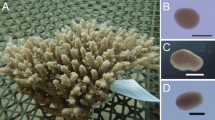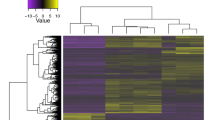Abstract
We report here a novel approach for the extraction, isolation and culturing of intact ectodermal tissue layers from a model marine invertebrate, the sea anemone Nematostella vectensis. A methodology is described in which a brief exposure of the animal to the mucolytic agent N-acetyl-L-cysteine (NAC) solution triggers the dislodging of the ectodermis from its underlying basement membrane and mesoglea. These extracted fragments of cell sheets adherent to culture-dish substrates, initially form 2D monolayers that are transformed within 24 h post-isolation into 3D structures. These ectodermal tissues were sustained in vitro for several months, retaining their 3D structure while continuously releasing cells into the surrounding media. Cultures were then used for cell type characterizations and, additionally, the underlying organization of actin filaments in the 3D structures are demonstrated. Incorporation of BrdU and immunohistochemical labeling using p-histone H3 primary antibody were performed to compare mitotic activities of ectodermal cells originating from intact and from in vivo regenerating animals. Results revealed no change in mitotic activities at 2 h after bisection and a 1.67-, 1.71- and 3.74-fold increase over 24, 48 and 72 h of regeneration, respectively, depicting a significant correlation coefficient (p < 0.05; R 2 = 0.74). A significant difference was found only between the control and 3-day regenerations (p = 0.016). Cell proliferation was demonstrated in the 3D ectodermis after 6 culturing days. Moreover, monolayers that were subjected to Ca++/Mg++ free medium for the first 2 h after isolation and then replaced by standard medium, showed, at 6 days of culturing, profuse appearance of positive p-histone H3-labeled nuclei in the 3D tissues. Cytochalasin administered throughout the culturing period abolished all p-histone H3 labeling. This study thus depicts novel in vitro tissue culturing of ectodermal layers from a model marine invertebrate, demonstrating the ease with which experiments can be performed and cellular and molecular pathways can be revealed, thus opening studies on 2D tissue organizations and morphogenesis as well as the roles of cellular components in the formation of tissues in this organism.






Similar content being viewed by others
References
Bancroft JD, Stevens A (1990) Theory and Practice of Histological Techniques, 3rd edn. Churchill Livingstone, Edinburgh
Bossert PE, Dunn MP, Thomsen GH (2013) A staging system for the regeneration of a polyp from the aboral physa of the anthozoan cnidarian Nematostella vectensis. Dev Dyn 242:1320–1331. doi:10.1002/dvdy.24021
Cameron ML, Steele JE (1959) Simplified aldehyde-fuchsin staining of neurosecretory cells. Stain Technol 34:265–266. doi:10.3109/10520295909114686
Coyne K, Laursen JR, Yoshino TP (2015) In vitro effects of mucus from the mantle of compatible (Lymnaea elodes) and incompatible (Helisoma trivolvis) snail hosts on Fascioloides magna Miracidia. J Parasitol 101:351–357. doi:10.1645/14-606.1
Daly M (2002) A systematic revision of Edwardsiidae (Cnidaria, Anthozoa). Invertebr Biol 121:212–225
Darling JA, Reitzel AR, Burton PM, Mazza ME, Ryan JF, Sullivan JC, Finnerty JR (2005) Rising starlet: the starlet sea anemone, Nematostella vectensis. BioEssays 27:211–221. doi:10.1002/bies.20181
De Caralt S, Uriz MJ, Wijffels RH (2007) Cell culture from sponges: pluripotency and immortality. Trends Biotechnol 25:467–471. doi:10.1016/j.tibtech.2007.08.006
DuBuc TQ, Traylor-Knowles N, Martindale MQ (2014) Initiating a regenerative response; cellular and molecular features of wound healing in the cnidarian Nematostella vectensis. BMC Biol 12:24
Extavour CG, Pang K, Matus DQ, Martindale MQ (2005) Vasa and Nanos expression patterns in a sea anemone and the evolution of bilaterians germ cell specification mechanisms. Evol Dev 7:201–215. doi:10.1111/j.1525-142X.2005.05023.x
Finnerty JR, Pang K, Burton P, Paulson D, Martindale MQ (2004) Origins of bilateral symmetry: Hox and Dpp expression in a sea anemone. Science 304:1335–1337
Fotakis G, Timbrell JA (2006) In vitro cytotoxicity assays: comparison of LDH, neutral red, MTT and protein assay in hepatoma cell lines following exposure to cadmium chloride. Toxicol Lett 160:171–177. doi:10.1016/j.toxlet.2005.07.001
Frank P, Bleakney JS (1976) Histology and sexual reproduction of the anemone Nematostella vectensis Stephenson 1935. J Nat Hist 10:441–449. doi:10.1080/00222937600770331
Frank U, Rabinowitz C, Rinkevich B (1994) In vitro establishment of continuous cell cultures and cell lines from ten colonial cnidarians. Mar Biol 120:491–499
Fritzenwanker JH, Technau U (2002) Induction of gametogenesis in the basal cnidarian Nematostella vectensis (Anthozoa). Dev Genes Evol 212:99–103. doi:10.1007/s00427-002-0214-7
Fritzenwanker JH, Saina M, Technau U (2004) Analysis of forkhead and snail expression reveals epithelial–mesenchymal transitions during embryonic and larval development of Nematostella vectensis. Dev Biol 275:389–402. doi:10.1016/j.ydbio.2004.08.014
Griffith LG, Naughton G (2002) Tissue engineering--current challenges and expanding opportunities. Science 295:1009–1014. doi:10.1126/science.106921
Hand C, Uhlinger KR (1992) The culture, sexual and asexual reproduction, and growth of the sea anemone Nematostella vectensis. Biol Bull 182:169–176
Hu GB, Wang D, Wang CH, Yang KF (2008) A novel immortalization vector for the establishment of penaeid shrimp cell lines. In Vitro Cell Dev-Anim 44:51–56. doi:10.1007/s11626-007-9076-7
Ilan M, Contini H, Carmeli S, Rinkevich B (1996) Progress towards cell cultures from marine sponges that produce bioactive compounds. J Mar Biotechnol 4:145–149
Jahnel SM, Walzl M, Technau U (2014) Development and epithelial organisation of muscle cells in the sea anemone Nematostella vectensis. Front Zool 11:44
Martindale MQ, Pang K, Finnerty JR (2004) Investigating the origins of triploblasty: ‘mesodermal’ gene expression in a diploblastic animal, the sea anemone Nematostella vectensis (phylum, Cnidaria; class, Anthozoa). Development 131:2463–2474. doi:10.1242/dev.01119
Parenteau-Bareil R, Gauvin R, Berthod F (2010) Collagen-based biomaterials for tissue engineering applications. Materials 3:1863–1887. doi:10.3390/ma3031863
Passamaneck YJ, Martindale MQ (2012) Cell proliferation is necessary for the regeneration of oral structures in the anthozoan cnidarian Nematostella vectensis. BMC Dev Biol 12:34
Peng SE, Lou YJ, Huang HJ, Lee IT, Hou LS, Chen WNU, Fang LS, Chen CS (2008) Isolation of tissue layers in hermatypic corals by N-acetylcysteine: morphological and proteomic examinations. Coral Reefs 27:133–142. doi:10.1007/s00338-007-0300-4
Putnam NH, Srivastava M, Hellsten U, Dirks B, Chapman J, Salamov A, Terry A, Shapiro H, Lindquist E, Kapitonov VV, Jurka J, Genikhovich G, Grigoriev IV, Lucas SM, Steele RE, Finnerty JR, Technau U, Martindale MQ, Rokhsar DS (2007) Sea anemone genome reveals ancestral eumetazoan gene repertoire and genomic organization. Science 317:86–94. doi:10.1126/science.1139158
Rabinowitz C, Rinkevich B (2003) Epithelial cell cultures from Botryllus schlosseri palleal buds: accomplishments and challenges. Methods Cell Sci 25:137–148
Rabinowitz C, Rinkevich B (2004) In vitro delayed senescence of extirpated buds from zooids of the colonial tunicate Botryllus schlosseri. J Exp Biol 207:1523–1532. doi:10.1242/jeb.00899
Rabinowitz C, Rinkevich B (2011) De novo emerged stemness signatures in epithelial monolayers developed from extirpated palleal buds. In Vitro Cell Dev-Anim 47:26–31. doi:10.1007/s11626-010-9357-4
Rabinowitz C, Alfassi G, Rinkevich B (2009) Further portrayal of epithelial monolayers emergent de novo from extirpated ascidians palleal buds. In Vitro Cell Dev -Anim 45:334–342. doi:10.1007/s11626-009-9179-4
Raz-Bahat M, Erez J, Rinkevich B (2006) In vivo light-microscopic documentation for primary calcification processes in the hermatypic coral Stylophora pistillata. Cell Tissue Res 325:361–368. doi:10.1007/s00441-006-0182-8
Reitzel AM, Burton PM, Krone C, Finnerty JR (2007a) Comparison of developmental trajectories in the starlet sea anemone Nematostella vectensis: embryogenesis, regeneration, and two forms of asexual fission. Invertebr Biol 126:99–112. doi:10.1111/j.1744-7410.2007.00081.x
Reitzel AM, Sullivan JC, Brown BK, Chin DW, Cira EK, Edquist SKM, Genco BM, Joseph OC, Kaufman CA, Kovitvongsa K, Muñoz MM, Negri TL, Taffel JR, Zuehlke RT, Finnerty JR (2007b) Ecological and developmental dynamics of a host-parasite system involving a sea anemone and two ctenophores. J Parasitol 93:1392–1402. doi:10.1645/GE-1250.1
Renfer E, Amon-Hassenzahl A, Steinmetz PR, Technau UA (2010) Muscle-specific transgenic reporter line of the sea anemone, Nematostella vectensis. Proc Natl Acad Sci U S A 107:104–108. doi:10.1073/pnas.0909148107
Rentzsch F, Anton R, Saina M, Hammerschmidt M, Holstein TW, Technau U (2006) Asymmetric expression of the BMP antagonists chordin and gremlin in the sea anemone Nematostella vectensis: implications for the evolution of axial patterning. Dev Biol 296:375–387. doi:10.1016/j.ydbio.2006.06.003
Rinkevich B (1999) Cell cultures from marine invertebrates: obstacles, new approaches and recent improvements. J Biotechnol 70:133–153
Rinkevich B (2005) Marine invertebrate cell cultures: new millennium trends. Mar Biotechnol 7:429–439. doi:10.1007/s10126-004-0108-y
Rinkevich B (2011) Cell culture from marine invertebrates: new insights for capturing endless stemness. Mar Biotechnol 13:345–354. doi:10.1007/s10126-010-9354-3
Rinkevich B, Rabinowitz C (1993) In vitro culture of blood cells from the colonial protochordate Botryllus schlosseri. In Vitro Cell Dev -Anim 29A:79–85
Rinkevich B, Rabinowitz C (1997) Initiation of epithelial cell cultures from palleal buds of Botryllus schlosseri, a colonial tunicate. In Vitro Cell Dev -Anim 33:422–424
Rinkevich B, Avishai N, Rabinowitz C (2005) UV incites diverse levels of DNA breaks in different cellular compartments of a branching coral species. J Exp Biol 208:843–848. doi:10.1242/jeb.01496
Sheader M, Suwailem AM, Rowe GA (1997) The anemone, Nematostella vectensis, in Britain: considerations for conservation management. Aquat Conserv: Mar Freshw Ecosyst 7:13–25
Singer II (1971) Tentacular and oral-disc regeneration in the sea anemone, Aiptasia diaphana. J Embryol Exp Morphol 26:253–270
Stefanik DJ, Friedman LE, Finnerty JR (2013) Collecting, rearing, spawning and inducing regeneration of the starlet sea anemone, Nematostella vectensis. Nat Protoc 8:916–923. doi:10.1038/nprot.2013.044
Sullivan JC, Ryan JF, Watson JA, Webb J, Mullikin JC, Rokhasar D, Finnerty JR (2006) StellaBase: The Nematostella vectensis genomics database. Nucleic Acids Res 34:D495–D499
Tarrant AM, Gilmore TD, Reitzel AM, Levy O, Technau U, Martindale MQ (2015) Current directions and future perspectives from the third Nematostella research conference. Zoology 118:135–140. doi:10.1016/j.zool.2014.06.005
Technau U (2010) The sea anemone Nematostella vectensis as a model system for the study of the evolutionary origin of triploblasty and bilaterality. Palaeodiversity 3:155–157
Tucker RP, Shibata B, Blankenship TN (2011) Ultrastructure of the mesoglea of the sea anemone Nematostella vectensis (Edwardsiidae). Invertebr Biol 130:11–24. doi:10.1111/j.1744-7410.2010.00219.x
Vago R (2008) Beyond the skeleton: Cnidarian biomaterials as bioactive extracellular microenvironments for tissue engineering. Organogenesis 4:18–22. doi:10.4161/org.5843
Wijffels RH (2008) Potential of sponges and microalgae for marine biotechnology. Trends Biotechnol 26:26–31. doi:10.1016/j.tibtech.2007.10.002
Williams RB (1975) A redescription of the brackish-water sea anemone Nematostella vectensis Stephenson, with an appraisal of congeneric species. J Nat Hist 9:51–64
Wolenski FS, Layden MJ, Martindale MQ, Gilmore TD, Finnerty JR (2013) Characterizing the spatiotemporal expression of RNAs and proteins in the starlet sea anemone, Nematostella vectensis. Nat Protocol 8:900–915. doi:10.1038/nprot.2013.014
Acknowledgments
We thank Guy Paz for figure preparations and Elad Rachmilovitz for statistical advice. This study was supported by a grant from the Ministry of National Infrastructures, Energy and Water Resources in Israel.
Authors’ contributions
C.R. conceived, designed, performed the experiments and analyzed the data; C.R. and E.M. performed histological work; C.R. and B.R. wrote the paper.
Author information
Authors and Affiliations
Corresponding author
Ethics declarations
Competing interests
The authors declare that they have no competing interests
Additional information
An erratum to this article is available at http://dx.doi.org/10.1007/s00441-016-2516-5.
Rights and permissions
About this article
Cite this article
Rabinowitz, C., Moiseeva, E. & Rinkevich, B. In vitro cultures of ectodermal monolayers from the model sea anemone Nematostella vectensis . Cell Tissue Res 366, 693–705 (2016). https://doi.org/10.1007/s00441-016-2495-6
Received:
Accepted:
Published:
Issue Date:
DOI: https://doi.org/10.1007/s00441-016-2495-6




